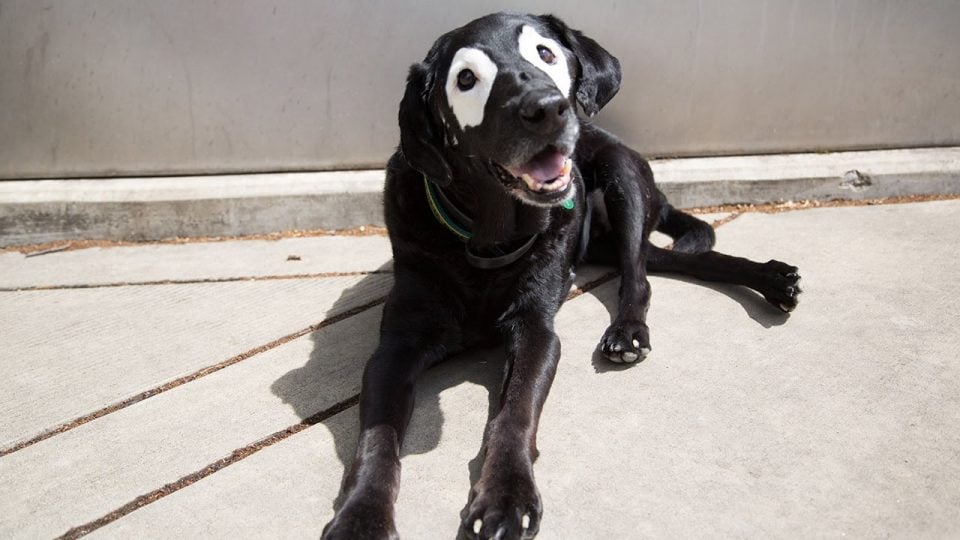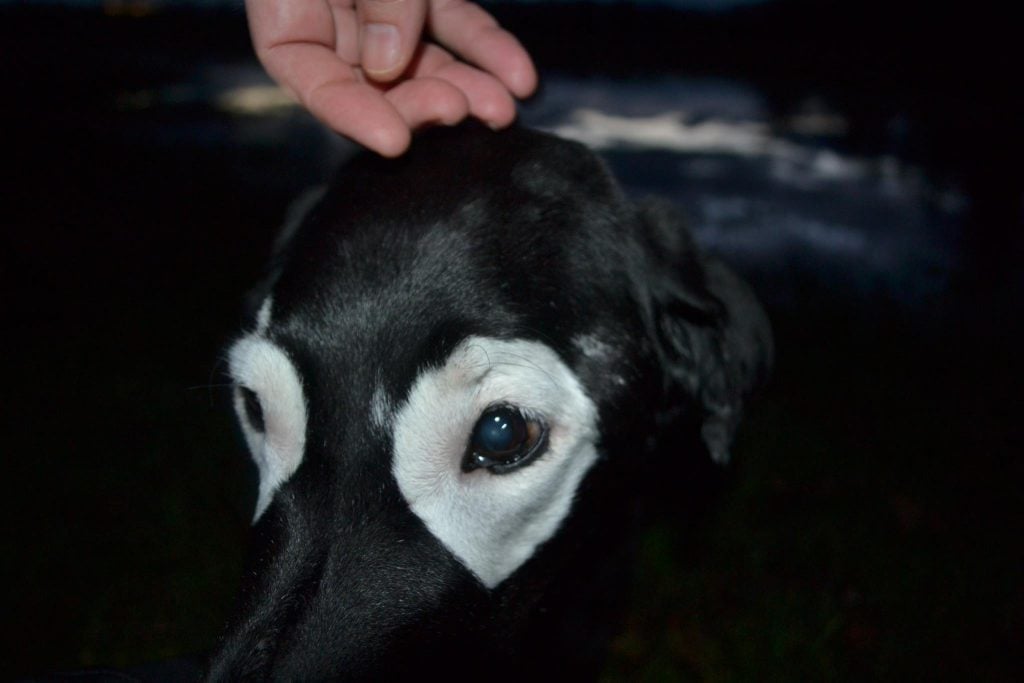Last year, photos of a dog named Rowdy went viral as people around the world marvelled at his curious markings: perfect white rings around his eyes. Rowdy is a black lab whose reverse-raccoon appearance made him a local celebrity in his town of Canby in Oregon.
Rowdy’s patchy spots are caused by vitiligo, a rare skin condition that causes patchy pigment loss. Unless you know a person or pet with vitiligo, chances are you’ve never heard of it before.
Read on to learn all about vitiligo and its stunning (but painless) effects.
What is Vitiligo?
https://www.instagram.com/p/BK461o3j2Ds/
I had never heard of vitiligo before seeing pictures of Rowdy, and I didn’t know if it was a disease, an infection, or just a skin condition. Actually, vitiligo is a pigmentation abnormality. Although scientists aren’t sure what exactly causes vitiligo, they believe it may be hereditary.
Vitiligo occurs when something in the dog’s system impacts melanin-producing cells. Most organisms (including humans) have melanin; it’s the pigment that gives skin, fur, eyes, and other body parts their colour. When melanin-producing cells are attacked, the pigment colour goes away, hence the white patches on dogs with vitiligo.
Symptoms of Vitiligo in Dogs
https://www.instagram.com/p/2Q7lG2yFy0/
The main symptom of vitiligo is pigment loss in skin and fur. In some dogs, their entire body will be depigmented. In others, only certain spots will be affected (like the white patches around Rowdy’s eyes).
Vitiligo usually shows up in young adulthood, and almost always starts on the dog’s face. During the first three to six months of its appearance, pigment loss may spread to other parts of the body. But if it doesn’t spread during those first few months, the symptoms of vitiligo will probably stay confined to the face (source).
In some cases, vitiligo causes skin lesions and an increased amount of dandruff. All of these symptom are strictly cosmetic; although it has a striking visual impact, vitiligo is completely painless.
What Kinds of Dogs Get Vitiligo
https://www.instagram.com/p/BCJQOjxi_qc/
Vitiligo is incredibly rare, affecting less than 1% of dogs. However, it is more common in some breeds than others. These are the breeds most likely to have vitiligo:
- Rottweiler
- Belgian Tervurens
- Old English Sheepdog
- German Shepherd
- Dachshund
Vitiligo is more prevalent in purebred dogs, likely due to its hereditary nature.
Treatment for Vitiligo
There’s really nothing to do about vitiligo…but there’s also nothing that needs to be done! Vitiligo is a completely harmless, painless condition that only affects your dog’s appearance.
Thankfully, dogs aren’t vain, and humans appreciate unusual features in their four-legged friends. “Weird-looking” dogs are just as loving, loyal, and one-of-a-kind as any others. If your gorgeous little weirdo needs someone to look after them once in a while when you’re away, fear not, there are lots of plenty of dog sitters who provide dog boarding and would love to take care of your dog. Find your dog’s perfect match on Rover.com.
___
Featured image: Youtube




